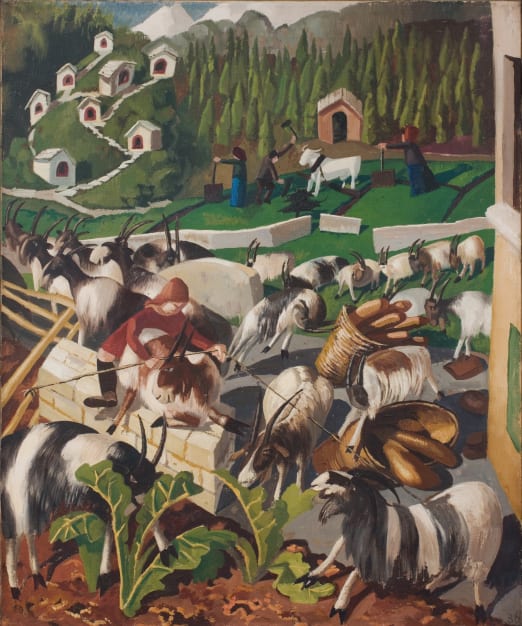High in the Swiss Alps between the villages of Saas-Fee and Saas-Grund, a precarious footpath is punctuated by small wayside chapels. Stanley Spencer’s visits to the area in 1933 and 1935 fired his imagination.
InSight No. 168
Stanley Spencer, Goats, Switzerland, 1936
Besides its sublime scenery, the Canton of Valais in the southern part of Switzerland is noted for a local breed of goat. The Valais Blackneck is dark brown in front and white behind. Stanley Spencer (1891–1959) took working holidays to the area in August and September 1933, and again in May 1935, and the goats caught his attention. During his second visit he stayed in Zermatt and, as he remembered in 1955, ‘herds of goats were a daily sight in the village’. Goats, Switzerland was painted from memory with the aid of drawings after Spencer had returned home, and the painting depicts the goats with incorrect markings—either from misapprehension or a calculated rejection of their uniform appearance. Rather than brown in front and white in back as they appear in life, Spencer remade them with irregular patchwork coats.
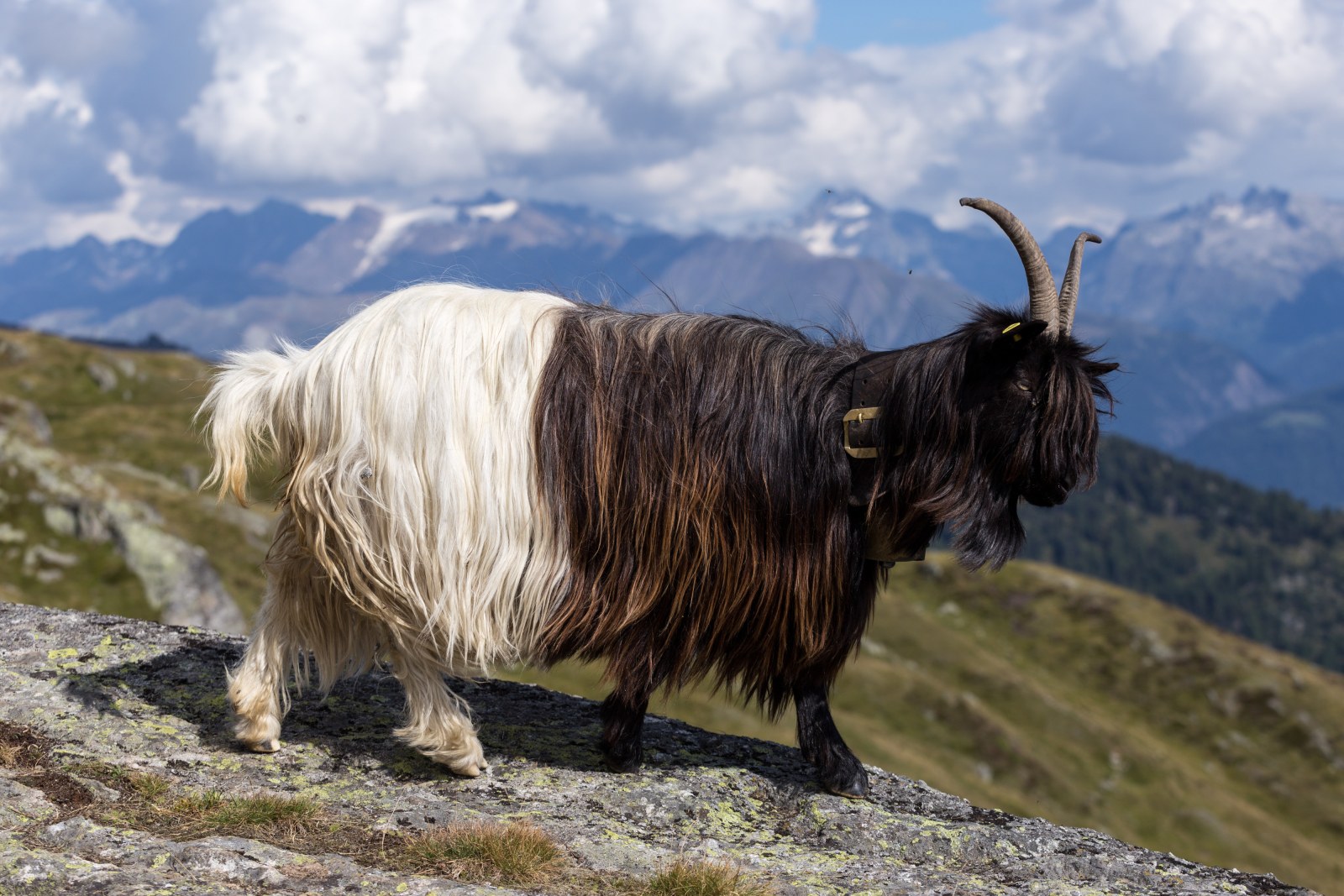
The painting shows the goats being herded up a lane from right to left, and causing havoc as they leave the track. A vegetable patch is being ravaged in the foreground, while bread baskets are knocked over and a neighbouring field is invaded. Spencer’s goats are the epitome of bad behaviour, and his temperamental attraction to Biblical themes and subject-matter invites comparison with the Gospel of Matthew: ‘and he shall separate them one from another, as a shepherd divideth his sheep from the goats: and he shall set the sheep on his right hand, but the goats on the left’. Spencer perhaps had this analogy in mind when making this raucous characterisation of Valais goats. His subject further carries the faint echo of an earlier, well-known allegorical painting by William Holman Hunt, The Scapegoat, which affirms a vague but persistent interpretation of Spencer as the spiritual successor to the Pre-Raphaelites.
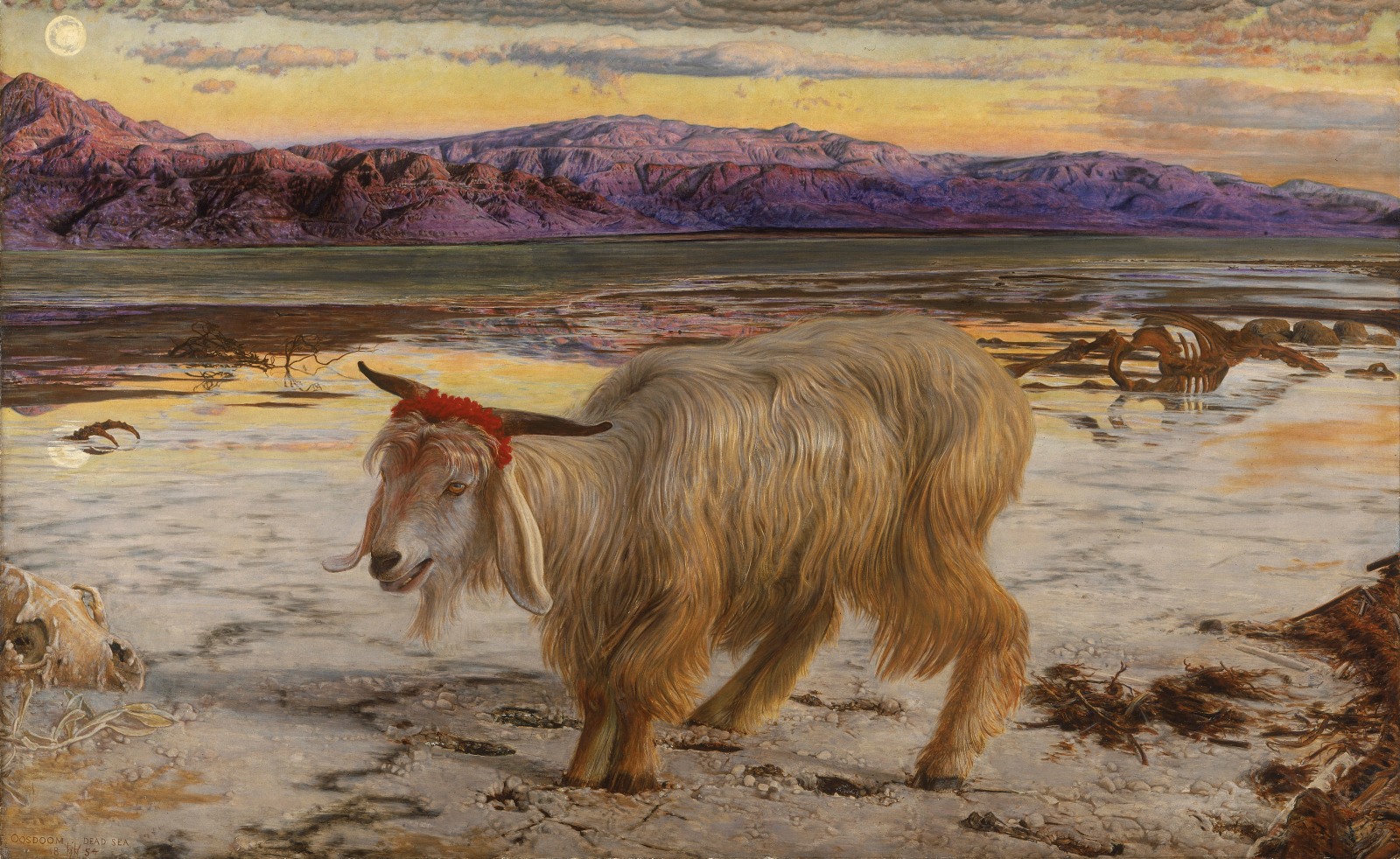
The occasion for Spencer’s visits to Switzerland were invitations from his new friend and patron Edward Beddington-Behrens. He was a businessman who warmed to Spencer’s work after visiting the Sandham Memorial Chapel at Burghclere, Hampshire, the murals of which Spencer had completed in 1932. In his memoirs, Beddington-Behrens remembered inviting Spencer ‘as I thought it would be an inspiration for him to visit a village like Saas Fé […] where old village customs and dress were maintained and where the constant danger of the mountains to man and beast help maintain a strong religious belief.’
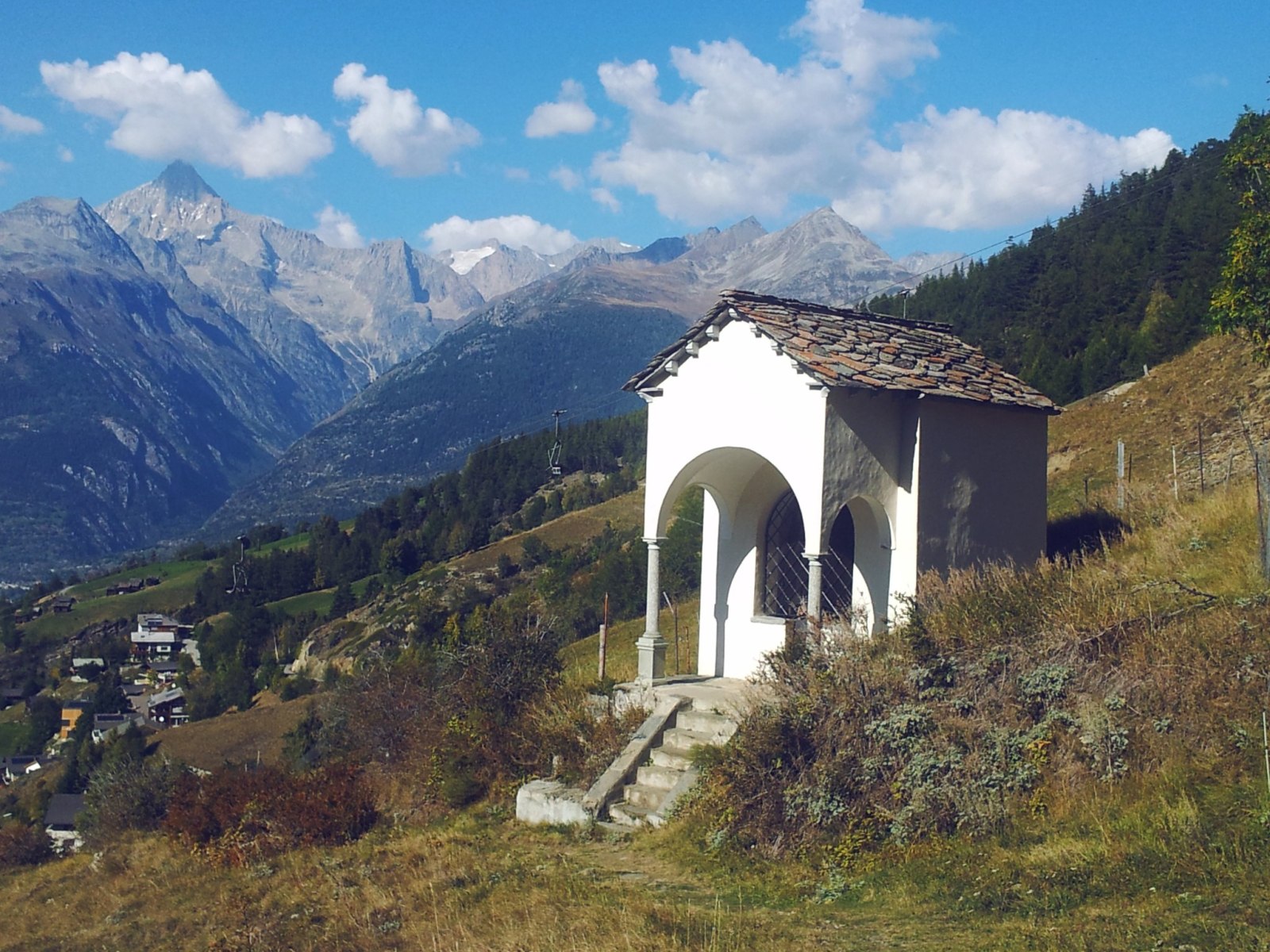
After a short time there, Beddington-Behrens invited Spencer’s friend (later mistress and second wife) Patricia Preece to join them. In her memoirs, written with Louise Collis, Preece gave an alarming account of the journey out:
Beddington-Behrens met me at Stalden, where the railway ended at that time. One had to continue by mule to Saas Grund, our destination. As the path mounted the view was magnificent. The world seemed all space, light and silence. The track narrowed, finally becoming a shelf cut out of the side of a precipice. To stumble would have meant death on the rocks hundreds of feet below.
In a letter, Spencer himself acknowledged this treacherous path with apparent nonchalance: ‘We had to ride mules to get here, great fun.’

Less precipitous was the footpath between Saas-Grund and Saas-Fee, known as the Kapellenweg (‘chapel trail’), which is dotted with fifteen wayside chapels that collectively represent the Mysteries of the Rosary. Spencer later described these chapels as being ‘like lumps of sugar-loaf in the distance’, and they lingered in his imagination. Floating on the mountainside in Goats, Switzerland, nine chapels in the Kapellenweg are pictured including the largest, Maria zur Hohen Stiege. Spencer also included some of these chapels in a large triptych that commemorated his visit of 1933, Souvenir of Switzerland.
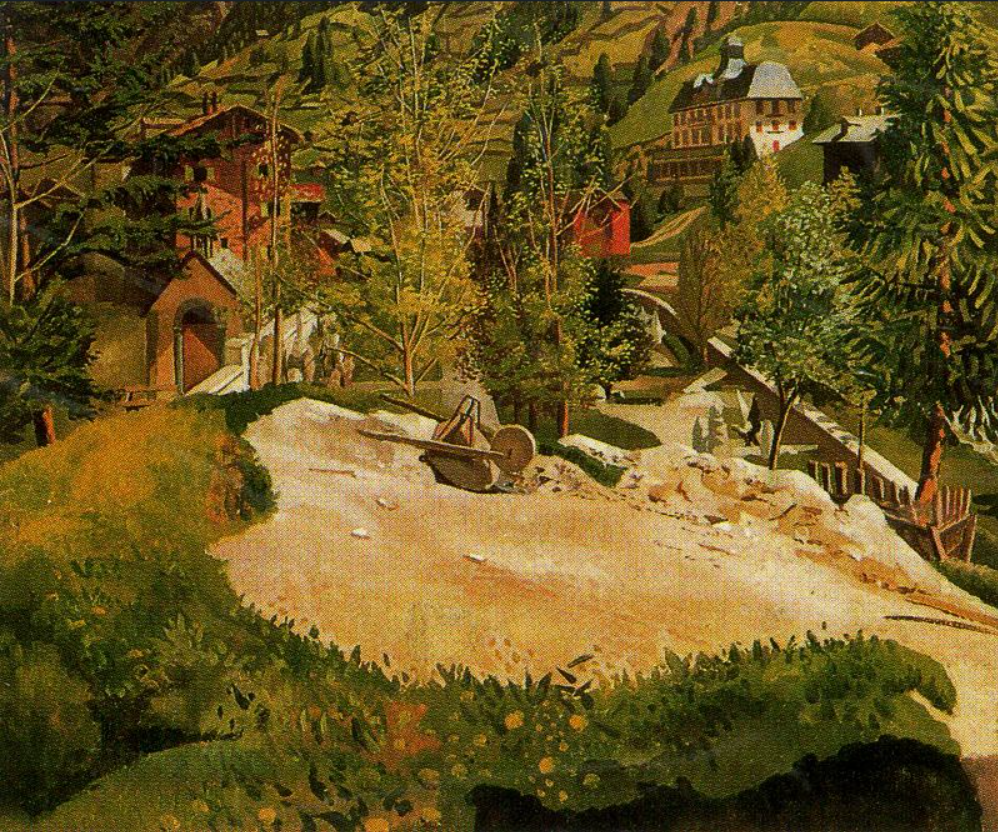
Spencer made at least seven paintings that related to his Swiss visits. There are palpable stylistic differences between those painted from life and those composed at home from memory and drawings: the former are exactingly naturalistic; the latter are identified by imaginative leaps of exaggeration, in which events, perspective and figure types were handled freely to the point of idiosyncrasy. According to Patricia Preece, the understanding was that Beddington-Behrens ‘would buy everything [Spencer] painted there.’ In the event, Beddington-Behrens wanted only two paintings (the large, imaginative Souvenir of Switzerland and the small, literal Geranium, A Street in Zermatt). But there was no shortage of demand. One painting, Alpine Landscape, was acquired by Vancouver Art Gallery. Goats, Switzerland was immediately bought by Spencer’s other reliable patrons, Louis and Mary Behrend (no relation of Beddington-Behrens), who had commissioned the Sandham Memorial Chapel. Besides their commercial success, Spencer’s paintings of Switzerland form a notable counterpoint to his frequent depictions of Cookham. In these works he achieved a piquant sense of place made possible not by intimate knowledge, but rather the thrill of unfamiliarity.
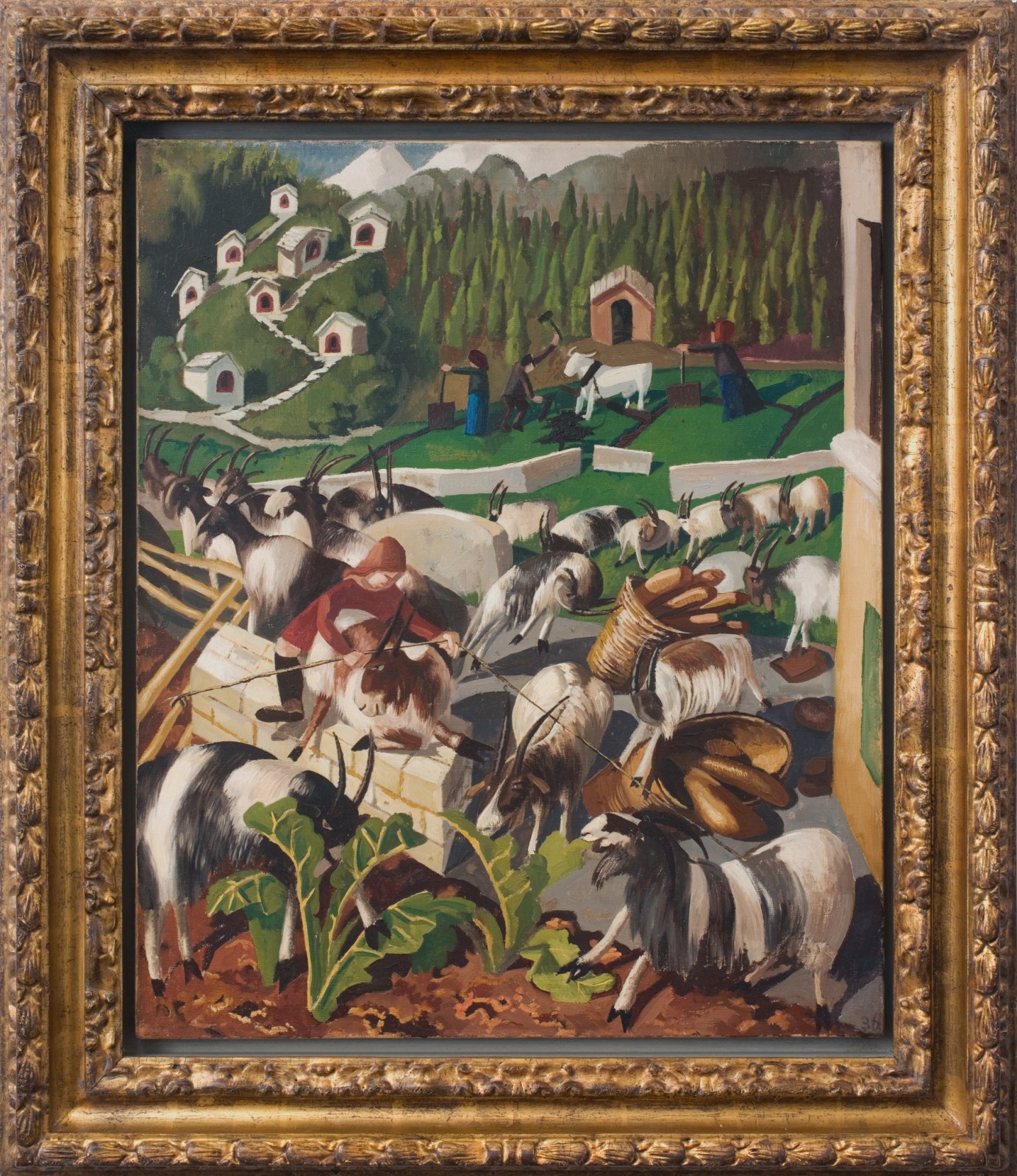
Images:
Valais Blackneck goat on Belalp, Valais, 2014, photographed by Joachim Kohler Bremen
William Holman Hunt, The Scapegoat, 1854–56, Lady Lever Art Gallery, Port Sunlight
A chapel on the Kapellenweg between Saas-Fee and Saas-Grund © 2025 Valais/Wallis Promotion
Stanley Spencer, Souvenir of Switzerland, 1934, National Museum of Wales – Amgueddfa Cymru, Cardiff © Estate of Stanley Spencer
Stanley Spencer, Goats, Switzerland (framed)
